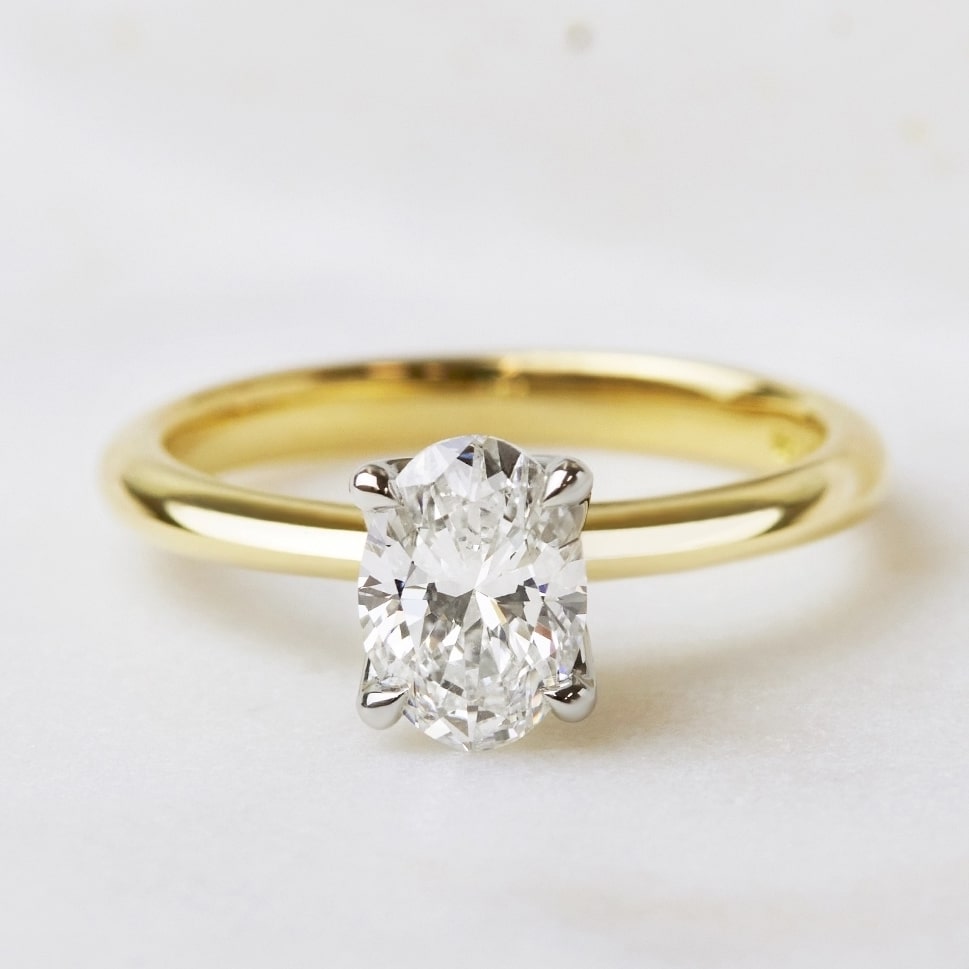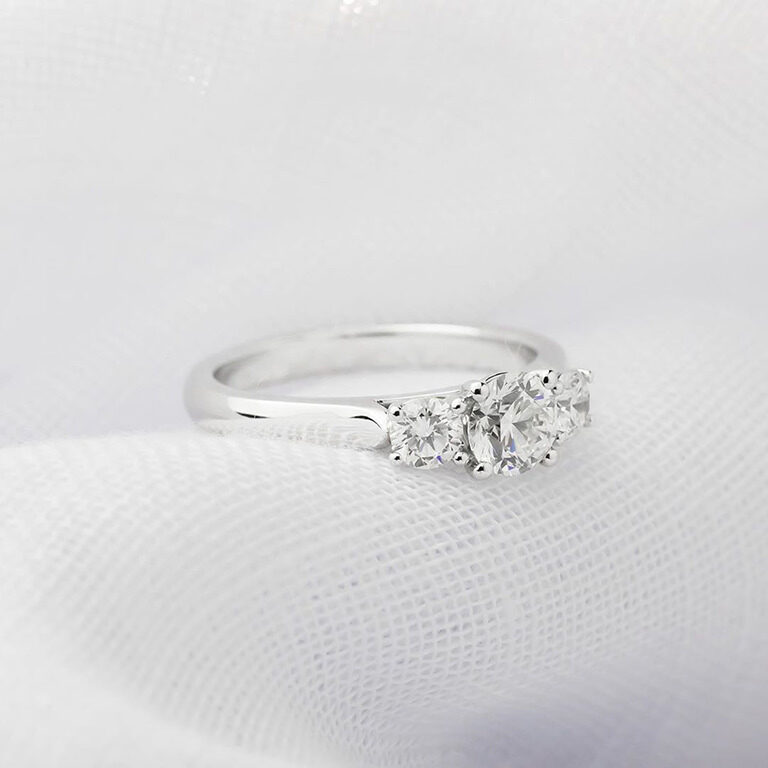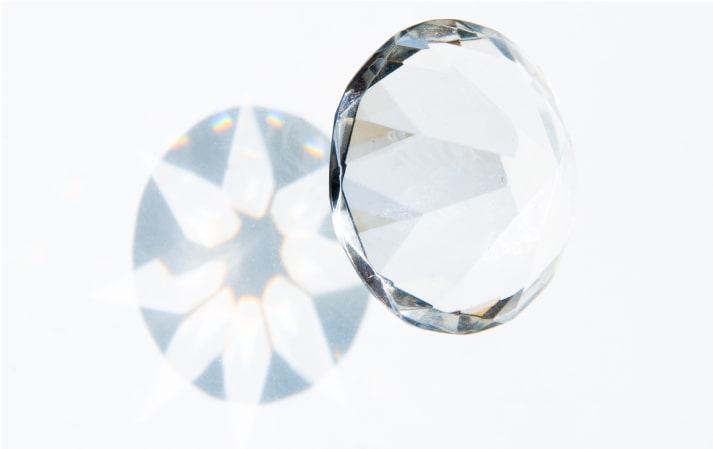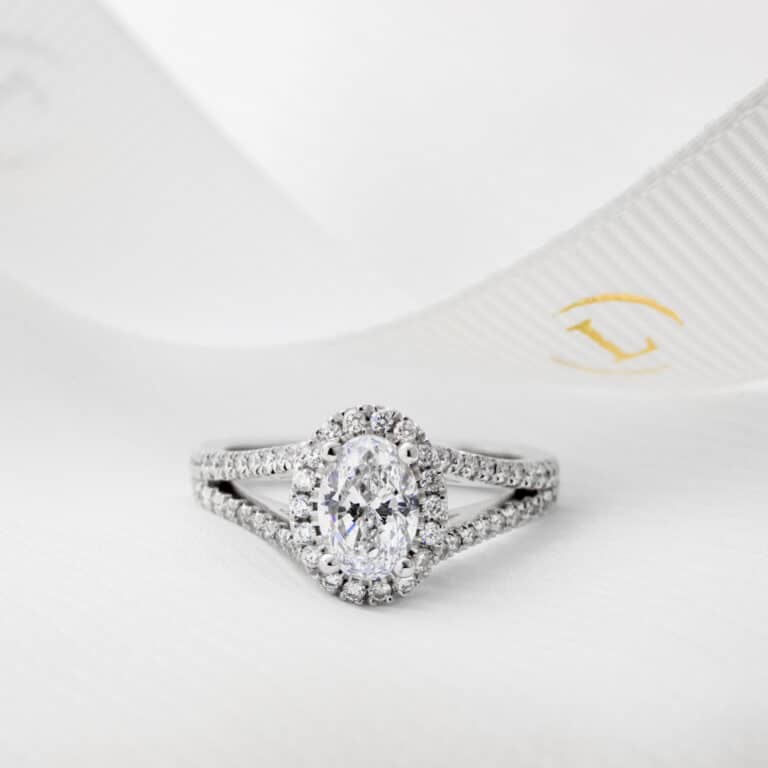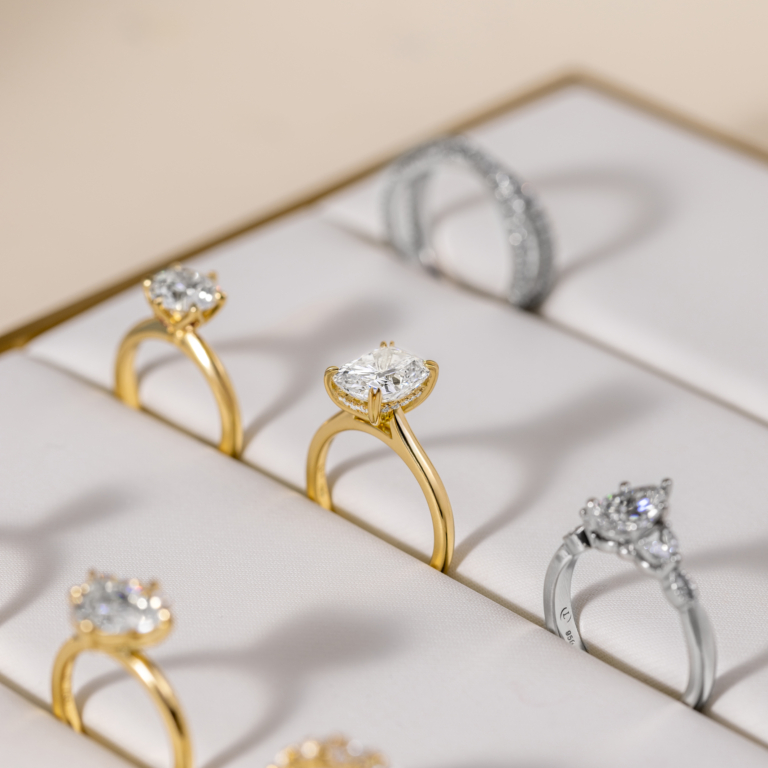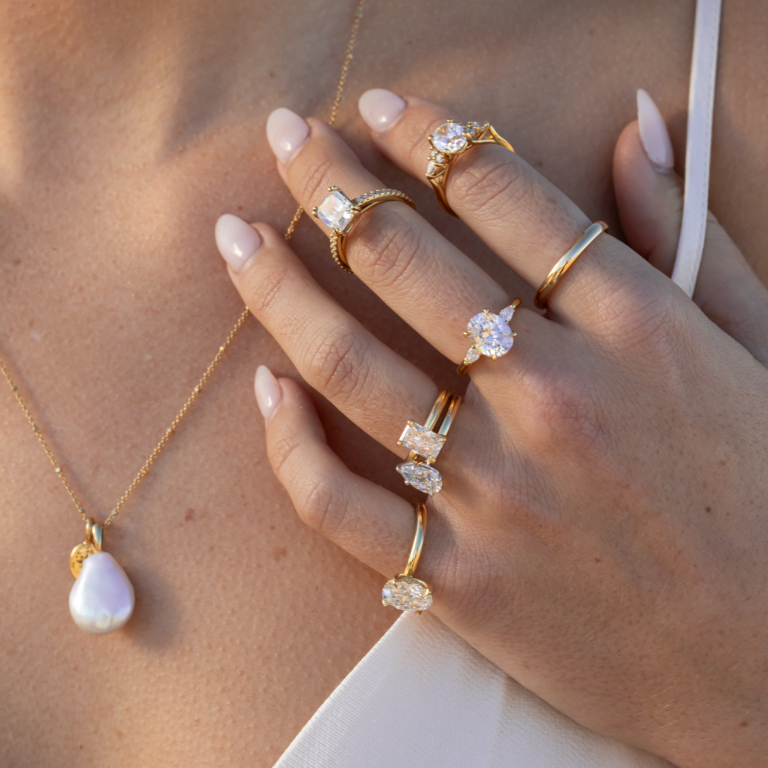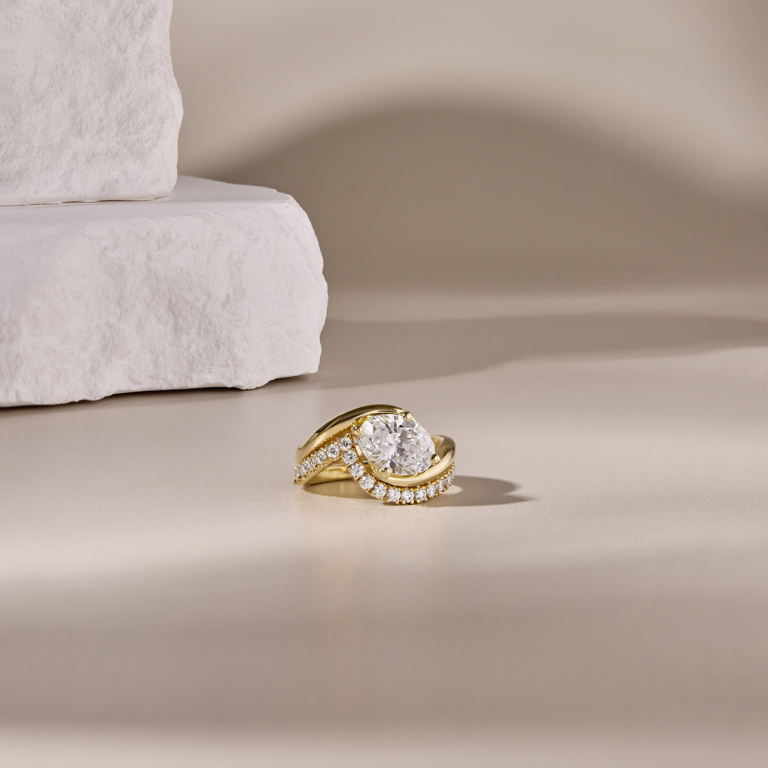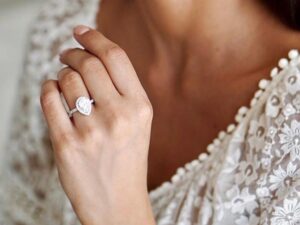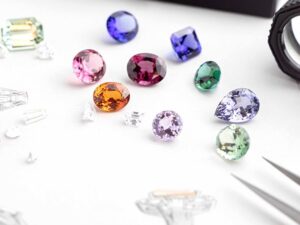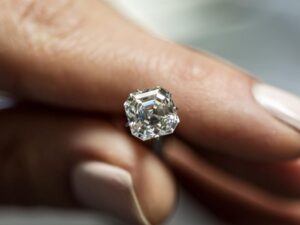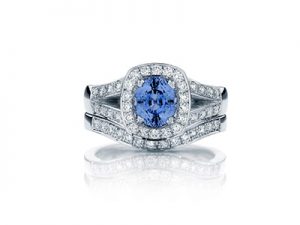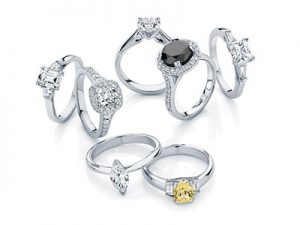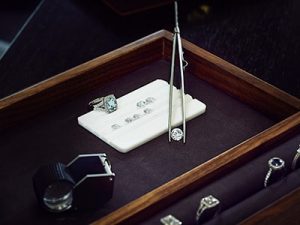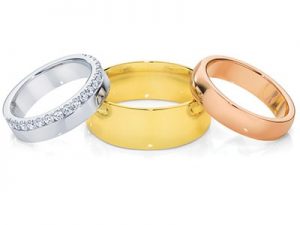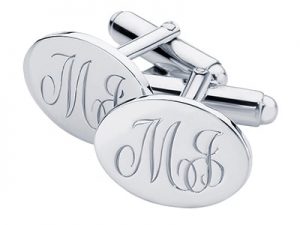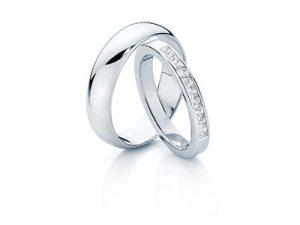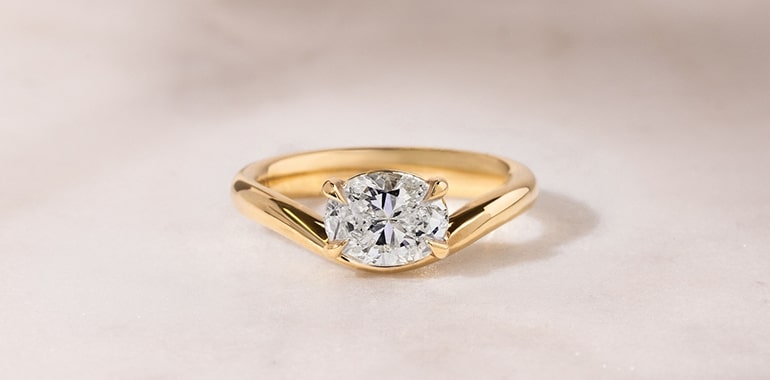Created Brilliance – The Rising Popularity of Lab Grown Diamonds
by Freya Enright
July 3, 2023 / Diamond Education
Diamonds have long been cherished as luxury, beauty, and an everlasting love symbol. Traditionally, they have been formed from the depths of the Earth’s upper mantle, but a new revolution has emerged in the form of lab-grown diamonds.
How much do you know about lab-grown diamond engagement rings? Read on to explore what they are, how they are made, the history behind them and why there is a growing demand for these remarkable gemstones.
What is a Lab Grown Diamond?
As the name suggests, lab-grown diamonds are diamonds created in highly controlled laboratory environments. They use technology that replicates the natural conditions in which diamonds form in the Earth. To make lab-grown diamonds, carbon atoms are arranged to form the same structure as a natural crystal diamond. As a lab-grown diamond has the same atomic structure, they exhibit the same characteristics as a mined diamond. They have identical physical, optical, and chemical properties requiring specialised equipment to diagnose.
How Are Lab-Grown Diamonds Made?
Lab Grown Diamonds, also known as synthetic diamonds, are diamonds that are created by humans. They’re grown in a laboratory using advanced technology to mimic the method that the natural diamond is formed. To create a lab-grown diamond, it needs to have both the correct levels of heat and pressure to produce a diamond and not graphite.
The geology of diamonds was reasonably well-known long before people attempted lab growing. In early attempts, only heat was replicated as it wasn’t realised that pressure was equally crucial for formation. Both natural and lab-grown diamonds need about 1200 degrees of temperature and 45-60 thousand atmospheres of pressure to form. Diamond and graphite are both made from pure carbon. Carbon wants to arrange itself as graphite naturally so we need to force the correct conditions on it to turn it into a diamond instead. Thus, producing a lab-grown diamond for your engagement ring.
There are two primary methods of producing lab-grown diamonds. One is Chemical Vapor Deposition (CVD), and in this process, a diamond seed is typically a thin slice of natural diamond placed in a chamber. Hydrocarbon gases are then introduced, which are then heated to extreme temperatures. As the gases break down, carbon atoms precipitate onto the diamond seed, resulting in the growth of a larger diamond.
The second method, High-Pressure High-Temperature (HPHT), involves subjecting a tiny diamond seed again to conditions mimicking the Earth’s upper mantle. A mixture of carbon sources is heated to induce the growth of the diamond seed.
This is how your lab-grown diamond is made, it only takes a few weeks. This is in stark contrast to the natural diamond that takes billions of years.
When Was the Lab-Grown Diamond Created?
Now that you know what a lab-grown diamond is and how it is made, let’s understand why and when it was created and how the demand has grown for it over the decades.
The First Ever Lab-Grown Diamond.
In the 1950s, diamonds were used for industrial use, primarily in mining and by General Electric.
A team of scientists at General Electric were the first laboratory to create the lab-grown diamond. However, they were only producing tiny diamonds, almost dust particles. Unfortunately, these were not much use for anything, and they looked like fancy graphite. This discovery marked a new era for the diamond.
Throughout the decades, many improvements were being made. It wasn’t until we reached the 1990s that we developed a synthesis for lab-grown diamonds. Although it still created tiny diamonds, the gem quality was finally at a stage where they could be sold.
The largest commercial size grown at this time was about 0.30ct.
When we went into the 2000s, this was when we saw a demand from a consumer perspective to buy lab-grown diamonds. Like with anything new, there is a trickle-down effect.
In this instance, the Lab Grown Diamond is tech-driven rather than a natural resource diamond. This means it has a delay in reaching any consumer as it needs to be studied and understood first. Following this, the promotion and marketing of the lab-grown diamond could begin with a specific inner circle, including De Beers. Further research was done until it was filtered into the mainstream market.
When Lab Grown Diamonds became available to the mainstream market, they were still costly as they were a rare commodity. The technology was complex and very expensive meaning natural, mined diamonds were the less expensive option
Technological advancements continued to reduce the costs and by 2016, the prices of lab-grown diamonds had dropped significantly. The price was now low enough for them to be considered a reasonable alternative to mined diamonds.
Why Choose a Lab-Grown Diamond?
Diamonds have always been an attractive option due to their durability. They are four times harder than sapphire which is the second hardest gemstone. This is one of the reasons why diamonds have always been such a popular choice for an engagement ring.
Lab-grown diamonds are fast becoming the desirable choice. They have the same properties as a natural diamond, the same durability, and refract and reflect equally as a mined diamond.
They are also chemically and physically identical to naturally mined diamonds, and the reason they are becoming popular is that they are cheaper.
Lab-grown diamonds have come down in cost as the demand has increased. More are available to buy, and manufacturing has become streamlined, ensuring it can meet the demand.
Lab-grown diamonds are primarily colourless, although you can get pink, blue, and orange. Coloured variations are hard to get, and it is rare to find a champagne-coloured lab-grown diamond.
The largest lab-grown faceted diamond to date is 32 carats.
How Do Lab-Grown Diamond Testers Work?
From the get-go, you are undoubtedly plagued with questions. What is the difference between lab-grown and mined diamonds? Let’s dive into this to put you at ease.
To tell the difference between them, you need to know what to look for; you cannot do so with the naked eye. You need the right equipment and knowledge.
If there are inclusions visible under 10x magnification, an expert may be able to identify these to tell whether a diamond is lab-grown or natural. The only way to distinguish between them is to assess their structure and composition using advanced techniques.
As the technology for lab-grown diamonds increases, the product is much cleaner with fewer and fewer inclusions. This means the expert will need to rely on specialised equipment to separate natural and lab-grown diamonds.
Trends of the Lab-Grown Diamond.
Lab-created diamonds are often high quality due to the controlled environment and monitored process. The market trend for those buying lab-grown diamonds is people who are 30 years old and under.
The reason is that consumer purchasing habits have shifted towards sustainable and ethically produced products. It is also an affordable option over its counterpart, natural diamond. The lab-grown diamond is becoming popular as many see it as an ethical option for a diamond and a socially responsible choice. We recommend researching the specific laboratories if this is your main motivation.
We at Larsen Jewellery prefer suppliers who are environmentally conscious in their production. Our suppliers include Greenrocks Diamonds and WD Diamonds who grow their diamonds using renewable energy.
If you are considering a lab grown diamond for your diamond engagement ring and you want to understand more, please get in touch. We’d love to welcome you in for an obligation-free appointment with the friendly staff at Larsen Jewellery. We can guide you through a stunning array of options and help design a one-off bespoke piece you were a part of creating.
